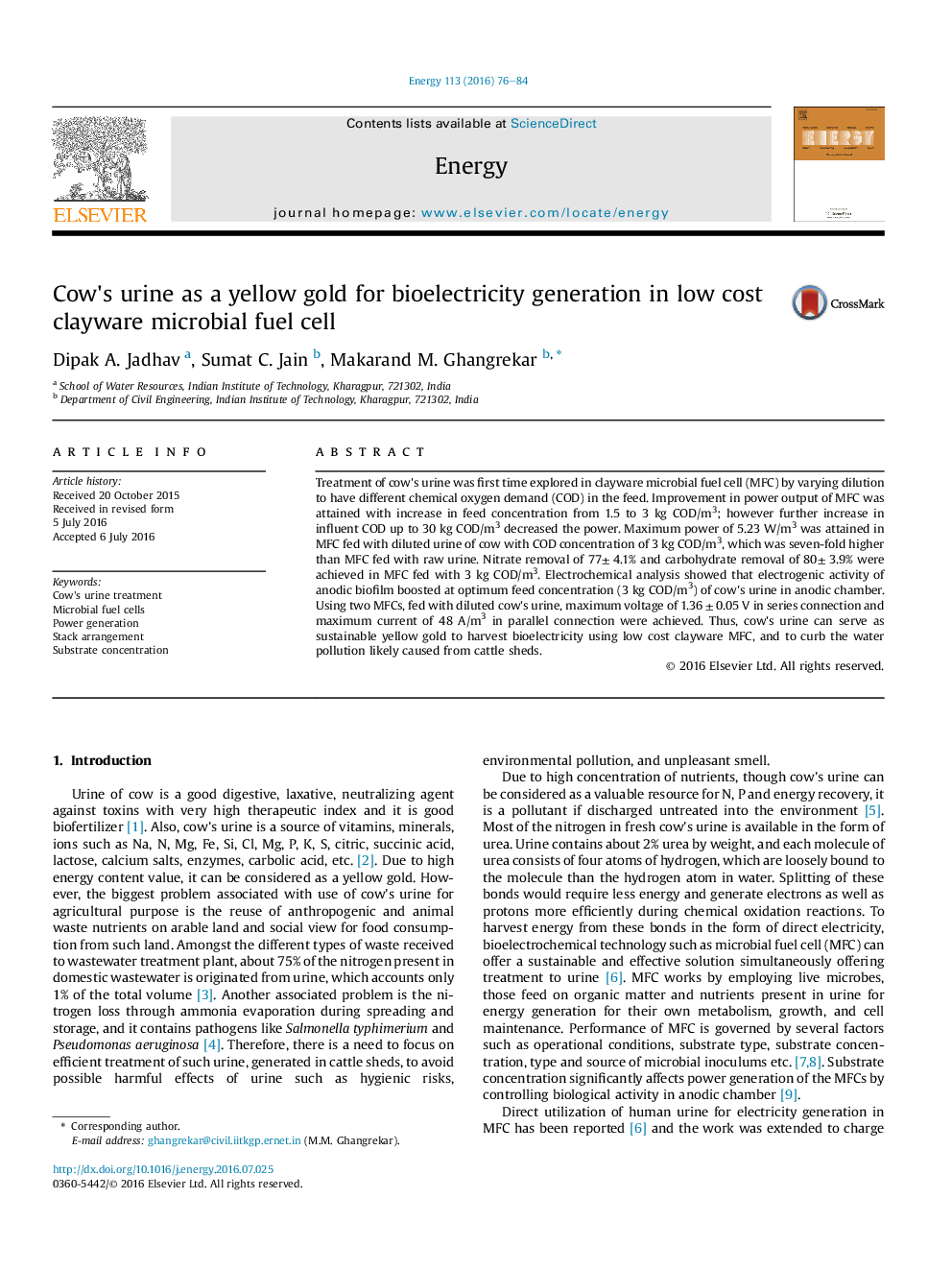| کد مقاله | کد نشریه | سال انتشار | مقاله انگلیسی | نسخه تمام متن |
|---|---|---|---|---|
| 1730722 | 1521435 | 2016 | 9 صفحه PDF | دانلود رایگان |
• Cow's urine is used as a substrate in cheaper clayware MFC to harvest electricity.
• Power increased from 3.08 to 5.23 W/m3 with increase in dose from 1.5 to 3 g COD/L.
• COD & nitrate removal of 79 & 77% were achieved in MFC fed with 3 g COD/L urine.
• MFC fed with 3 g COD/L urine gave 7-fold higher power than MFC fed with raw urine.
• Current of 48 A/m3 produced by two MFCs connected in parallel fed with cow's urine.
Treatment of cow's urine was first time explored in clayware microbial fuel cell (MFC) by varying dilution to have different chemical oxygen demand (COD) in the feed. Improvement in power output of MFC was attained with increase in feed concentration from 1.5 to 3 kg COD/m3; however further increase in influent COD up to 30 kg COD/m3 decreased the power. Maximum power of 5.23 W/m3 was attained in MFC fed with diluted urine of cow with COD concentration of 3 kg COD/m3, which was seven-fold higher than MFC fed with raw urine. Nitrate removal of 77± 4.1% and carbohydrate removal of 80± 3.9% were achieved in MFC fed with 3 kg COD/m3. Electrochemical analysis showed that electrogenic activity of anodic biofilm boosted at optimum feed concentration (3 kg COD/m3) of cow's urine in anodic chamber. Using two MFCs, fed with diluted cow's urine, maximum voltage of 1.36 ± 0.05 V in series connection and maximum current of 48 A/m3 in parallel connection were achieved. Thus, cow's urine can serve as sustainable yellow gold to harvest bioelectricity using low cost clayware MFC, and to curb the water pollution likely caused from cattle sheds.
Journal: Energy - Volume 113, 15 October 2016, Pages 76–84
